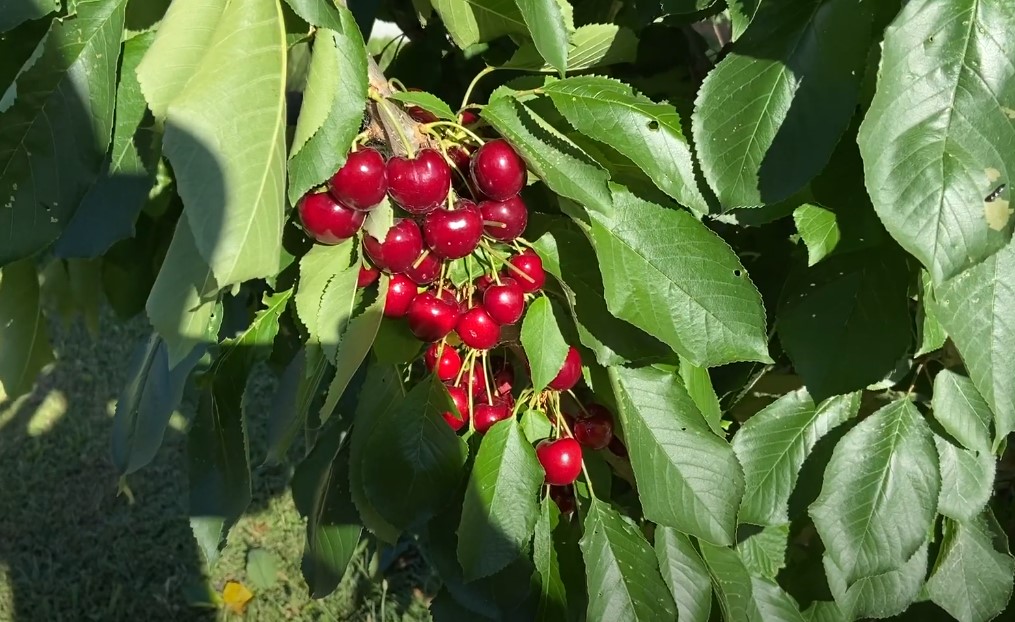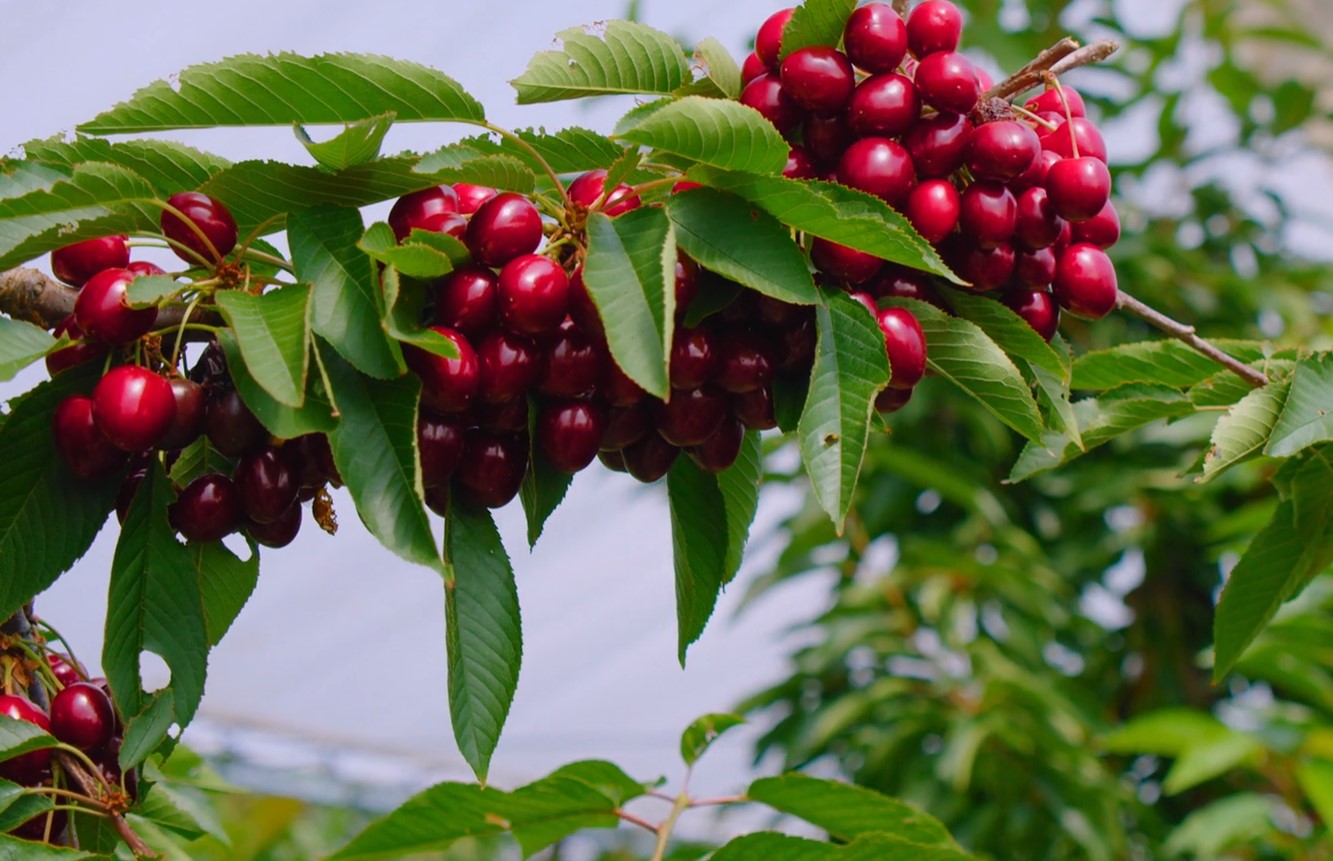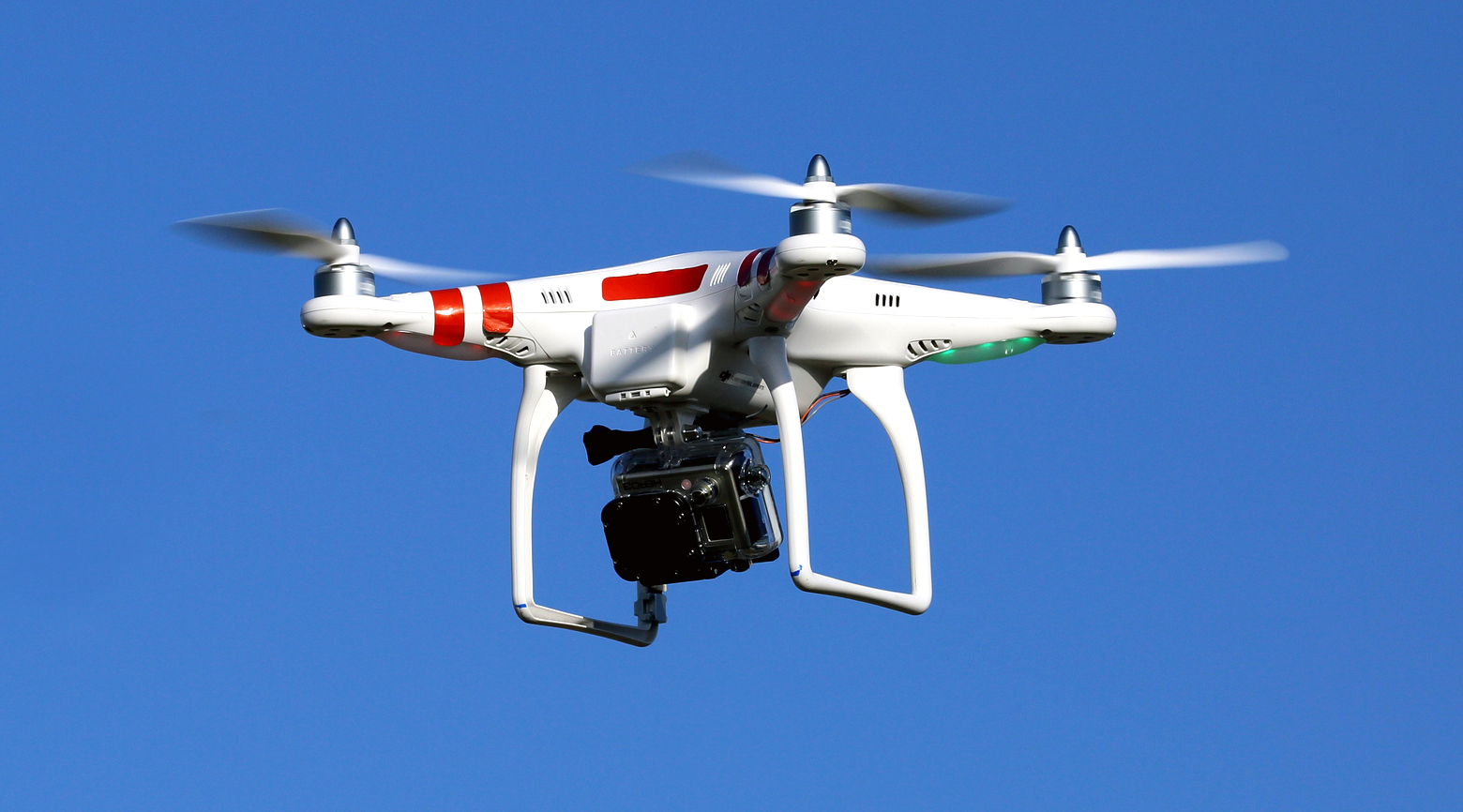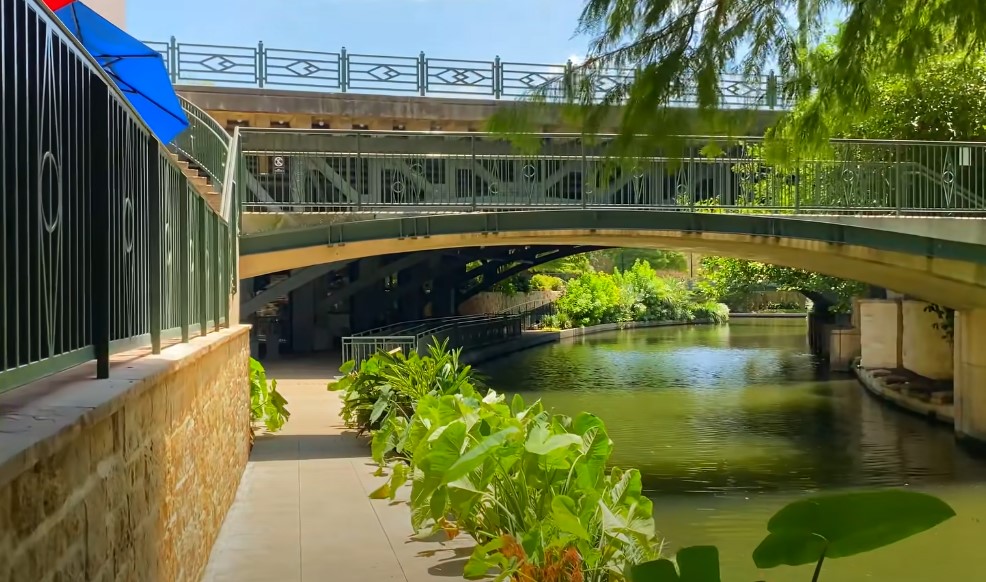Growing cherry trees in Texas is tough due to the hot climate and varying soil conditions. Choosing the right variety is crucial for success.
Here are the top eight cherry trees that thrive in Texas.
- Black Tartarian
- Royal Lee
- Lapins
- Compact Stella
- Nanking Cherry
- Sweetheart Cherry
- Lambert Cherry
- Romeo and Juliet Cherry Trees
1. Black Tartarian

| Common Name | Black Tartarian |
|---|---|
| Scientific Name | Prunus avium ‘Black Tartarian’ |
| Growing Zones | 5-8 |
| Height | 10-15 ft |
| Fruiting Season | June |
Black Tartarian cherry trees produce juicy, dark purple cherries that are very sweet. The tree blooms with white flowers in early spring, giving it a beautiful snow-covered appearance. This variety is great for northern and central Texas but struggles in the extreme heat of southern Texas. The tree requires a pollinating partner, making it ideal for orchards. With little maintenance required, it is a popular choice for home gardens across many regions in the United States.
This variety is also known by other names like Ronald’s Large Black Heart, Black Tartan, and Circassian Black. It thrives in well-drained soil and full sun. The Black Tartarian begins fruiting earlier than many other cherry varieties, making it a favored choice for those looking to enjoy fresh cherries sooner in the season.
Also, check out the best plants for landscaping in Texas.
2. Royal Lee

| Common Name | Royal Lee |
|---|---|
| Scientific Name | Prunus avium ‘Royal Lee’ |
| Growing Zones | 7-10 |
| Height | 10 ft (semi-dwarf) |
| Fruiting Season | July |
Royal Lee cherry trees are an excellent choice for southern Texas due to their ability to thrive in warm climates. These trees produce bright red, firm, and sweet cherries that are perfect for eating fresh or using in pies and preserves. The Royal Lee tree requires the Minnie Royal as a pollinating partner, so you need to plant both varieties close together.
This variety is not very drought-resistant and needs regular watering, especially during hot periods and heat waves. The Royal Lee blooms with beautiful white flowers in the spring and is known for its early blooming season. These trees do well in full sun and can tolerate various soil types, making them a versatile option for many gardeners in Texas.
3. Lapins
| Common Name | Lapins |
|---|---|
| Scientific Name | Prunus avium ‘Lapins’ |
| Growing Zones | 5-9 |
| Height | 20 ft |
| Fruiting Season | May to June |
Lapins cherry trees are known for their ability to tolerate warm weather, making them suitable for most parts of Texas. This variety is self-pollinating, which means it can produce fruit on its own without needing another cherry tree nearby. The Lapins tree begins to fruit in its first year, which is a big advantage for those looking to enjoy cherries quickly.
These trees produce large, sweet cherries that are perfect for fresh eating or cooking. The fruit matures earlier than many other cherry varieties, usually from May to June. Lapins cherry trees are also adaptable to different soil types, which is beneficial for Texas growers dealing with dry or dense soils. The trees can grow quite tall, so they need ample space to flourish and can produce up to 20 gallons of cherries.
4. Compact Stella

| Common Name | Compact Stella |
|---|---|
| Scientific Name | Prunus avium ‘Stella’ |
| Growing Zones | 5-8 |
| Height | 10 ft |
| Fruiting Season | July through August |
Compact Stella is a semi-dwarf cherry tree, ideal for gardens with limited space. It produces large, dark red cherries that are both firm and sweet, perfect for fresh eating and baking. This variety is self-fertile, so it does not require a pollinator, although having other stone fruit trees nearby can increase the yield.
Compact Stella begins to fruit within one to two years of planting, making it a favorite among home gardeners looking for quick results. The tree is well-suited for central Texas and the Panhandle, where it can grow in various soil types and handle moderate drought conditions. Its small size makes it easy to manage and harvest, providing a bountiful crop of delicious cherries each summer.
5. Nanking Cherry
| Common Name | Nanking Cherry |
|---|---|
| Scientific Name | Prunus tomentosa |
| Growing Zones | 3-7 |
| Height | 6-10 ft |
| Fruiting Season | July and August |
Nanking Cherry trees are a great option for northern Texas, especially the Panhandle. These trees are known for their cold hardiness, making them suitable for regions with cooler winters. They produce small, tangy, bright red cherries that are perfect for making pies, jellies, and jams.
The Nanking Cherry blooms with fragrant white flowers in the spring, adding ornamental value to your garden. These trees are also drought-resistant and can handle semi-arid conditions, which is beneficial for Texas climates. However, they are not self-fertile, so you need to plant at least two trees close to each other to ensure proper pollination. This variety also serves well as a hedge or border due to its dense branching pattern and attractive foliage.
6. Sweetheart Cherry
| Common Name | Sweetheart Cherry |
|---|---|
| Scientific Name | Prunus avium ‘Sweetheart’ |
| Growing Zones | 5-7 |
| Height | 7-10 ft |
| Fruiting Season | Mid-August to early September |
Sweetheart Cherry trees are a newer variety known for their late-season harvest and sweet, mildly tart cherries. These trees are easy to grow and maintain, making them a great choice for northern Texas. They produce beautiful pink and white blossoms in the spring, adding ornamental value to any garden.
The Sweetheart cherry is perfect for fresh eating and making jams due to its firm texture and sweet flavor with a hint of tartness. This variety is self-fertile, so it does not require another tree for pollination, although additional cherry trees can improve fruit production. The tree’s compact size makes it suitable for small gardens, and its late fruiting season extends the cherry harvest period into late summer.
7. Lambert Cherry

| Common Name | Lambert Cherry |
|---|---|
| Scientific Name | Prunus avium ‘Lambert’ |
| Growing Zones | 5-7 |
| Height | 15-18 ft |
| Fruiting Season | Late June to July |
Lambert Cherry trees are a reliable and productive variety that do well in northern Texas. They produce large, firm, dark red cherries that are excellent for fresh eating and preserving. These cherries have a rich, sweet flavor that is enjoyed by many.
This variety is self-fertile, meaning it does not require another tree for pollination, although planting additional cherry trees can enhance fruit yield. Lambert Cherry trees are known for their ornamental beauty as well, with snow-white blossoms in the spring and deep red fruit in the summer. They thrive in well-drained soil and full sun, making them a great addition to home gardens. This variety has been grown and enjoyed for over 150 years, proving its dependability and quality.
8. Romeo and Juliet Cherry Trees

| Common Name | Romeo and Juliet Cherry Trees |
|---|---|
| Scientific Name | Prunus cerasus ‘Romeo’ and ‘Juliet’ |
| Growing Zones | 3-7 |
| Height | 5-8 ft |
| Fruiting Season | Summer |
Romeo and Juliet Cherry trees are dwarf varieties that are perfect for small gardens and limited spaces. These trees produce some of the sweetest pie cherries, with a deep-red color and rich, complex flavor. They are highly productive and capable of yielding up to 25 pounds of cherries each season.
These trees are ideal for cooler climates and are well-suited for northern Texas. They are easy to maintain and do not require much space, making them perfect for backyard gardens. The trees bloom with beautiful white flowers in the spring, adding aesthetic value to any garden. The small size of the trees makes them easy to harvest and care for, providing an abundance of delicious cherries each year.
FAQs
Last Words
Growing cherry trees in Texas can be rewarding with the right varieties and care. Different regions of Texas offer suitable conditions for various types of cherry trees. Choose a variety that suits your local climate and soil, ensure the trees get ample sunlight, and regular water, and monitor for pests. Enjoy a fruitful harvest of delicious cherries.














